Metz Mecablitz 58 AF-1 test: frame coverage
This review contains test images taken with Metz Mecablitz 58 AF-1 showing direct flash frame coverage and built-in white card frame coverage. There is also and number of images to show how much light is "spilled" off to the sides of the Metz flash head.
Direct flash
This test is done by shooting directly at an indexed wall to see the true frame coverage delivered by Metz Mecablitz 58 AF-1 at all flash zoom values.
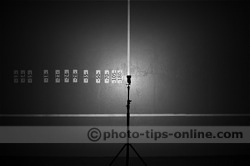 |
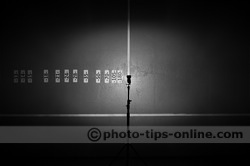 |
| 18mm, direct flash |
24mm, direct flash |
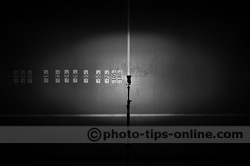 |
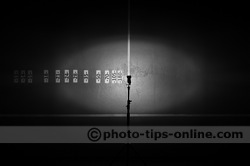 |
| 28mm, direct flash |
35mm, direct flash |
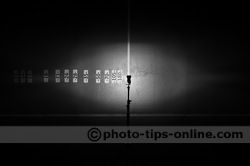 |
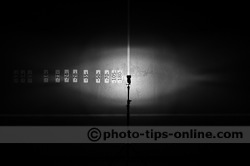 |
| 50mm, direct flash |
70mm, direct flash |
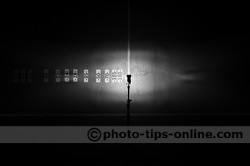 |
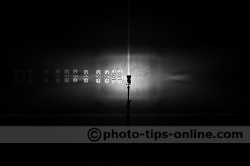 |
| 85mm, direct flash |
105mm, direct flash |
Test images above show that Metz Mecablitz 58 AF-1 flash produces even light throughout the whole frame at zoom levels. There is some noticeable light fall off in the edge area at wide zoom positions, which is typical for hot shoe flashes. At 35mm zoom value, the light fall off is minimal, and it is practically unnoticeable from 50mm on.
Interestingly enough, at zoom values of 105mm, 85mm, and 70mm, Metz 58 AF-1 creates some strong artifacts outside the "required" frame. This can be of a concern when you use your flash in the manual zoom mode. Using a wide angle lens and setting high flash zoom values may create some unwanted lighting effects in you images. It is better to use a hot shoe flash grid or a snoot for this kind of applications.
White Card
Shooting in the sky with a pulled out white card allows evaluating of fill light component created by the card.
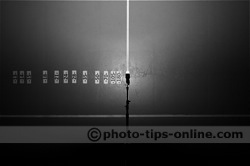 |
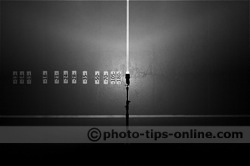 |
| 18mm, head vertical, white card |
24mm, head vertical, white card |
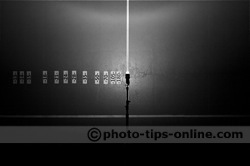 |
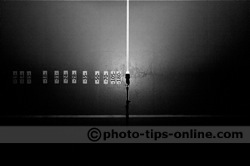 |
| 50mm, head vertical, white card |
105mm, head vertical, white card |
Setting flash zoom to 18mm, 24mm, and 50mm makes the white card redirect light, so that it is good enough to cover angle of view of up to 35mm. 105mm setting should work fine up to 50mm angle view.
Please note, that even though the exposure looks similar in all test images, the difference of flash power is quite significant. There is about 3 stops difference between the extreme values (18mm and 105mm). This fact can be used to balance bounced and fill light. So, set lower flash zoom values to shift the light ratio towards the fill light and use the higher zoom values to increase the bounced light component.
Flash Head Vertical
Wide Side
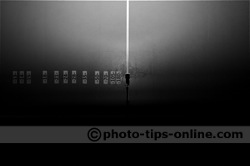 |
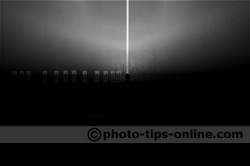 |
| 18mm, head vertical, wide side |
24mm, head vertical, wide side |
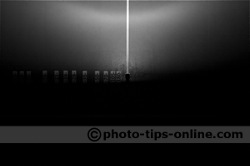 |
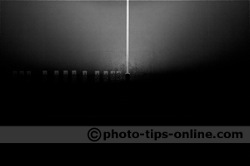 |
| 50mm, head vertical, wide side |
105mm, head vertical, wide side |
Narrow Side
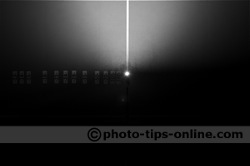 |
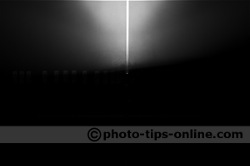 |
| 18mm, head vertical, narrow side |
24mm, head vertical, narrow side |
 |
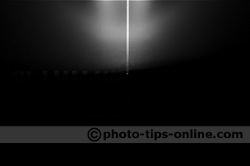 |
| 50mm, head vertical, narrow side |
105mm, head vertical, narrow side |
Narrow side produces slightly asymmetrical light output due to the design of the Metz Mecablitz 58 AF-1 flash head. This is a minor issue that is easily corrected by any reflector or a bounce card. The uneven areas seen in the test images are way out of the frame, and they are also not of a concern.
The important thing to remember is that Metz Mecablitz 58 AF-1 "spills" a lot more light off of narrow sides of its head than off of the wide ones. At 18mm (wide angle panel), the difference is about one and a half stops. At the other three tested settings, the difference in the light output between the wide and narrow sides was about 2 1/2 stops, which is quite significant. This fact should be taken into account when using flash light modifiers like Demb Flip-it!, SpectraLight, etc. (In comparison, Canon Speedlite 580EX II has only half a stop difference between the wide and narrow sides, as shown in our earlier test.)
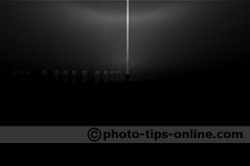 |
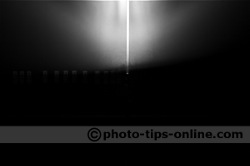 |
| 50mm, head vertical, wide side, full power |
50mm, head vertical, narrow side, full power |





















